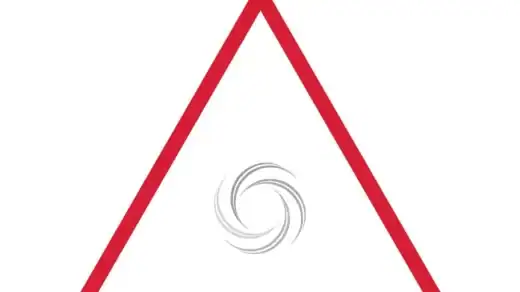Human history and personal lives are full of patterns that repeat. Individuals fall into the same habits, societies cycle through social and political trends, and history seems to repeat itself in different forms. Why does this happen? Why do humans, despite their knowledge and experience, struggle to break free from these cycles?
The answer lies in psychology, social dynamics, and historical patterns.
1. Why Individuals Repeat Patterns
On a personal level, many people find themselves repeating the same mistakes, habits, or relationship patterns. Even when they recognize the need for change, they struggle to break free.
1.1. The Comfort of the Known (Cognitive Looping)
The human brain is wired to prefer familiarity over uncertainty, even when familiarity is harmful. This is why people:
✅ Stay in toxic relationships because they feel “comfortable” even if they are unhappy.
✅ Maintain bad habits, despite knowing they should change.
✅ Repeat destructive behaviors, even when they logically understand the consequences.
This is linked to neural pathways—the more we repeat a behavior, the stronger the pathway becomes, making it harder to break the cycle (The Power of Habit, Duhigg).
1.2. Trauma and Unresolved Issues
Psychologists have long observed that people repeat emotional struggles due to unresolved trauma or deep-seated beliefs.
✅ A person who experienced abandonment as a child may unconsciously seek emotionally unavailable partners in adulthood.
✅ Someone who fears failure may sabotage their own success just before achieving their goals.
Until the root issue is addressed, the cycle repeats itself in different forms.
1.3. The Illusion of Change
Many people believe they are making progress, but in reality, they are just rearranging the same patterns.
✅ They leave a bad job, only to take another with the same issues.
✅ They escape a toxic relationship, only to repeat the same behaviors with someone new.
Without self-awareness and intentional action, they move in circles instead of forward.
2. Why Societies Repeat Social Cycles
When humans form groups, communities, or nations, similar cycles emerge on a larger scale. Societies experience waves of cultural, economic, and political shifts—only for the patterns to return in new forms.
2.1. The Pendulum Effect
Societies tend to swing between extremes, like a pendulum moving back and forth over time.
✅ Periods of strict social control often lead to rebellion and liberalization.
✅ Economic booms often lead to carelessness and financial crashes.
This happens because society corrects itself but often overcorrects, creating new imbalances that start the next cycle.
2.2. Collective Memory and Forgetting
Each generation believes it is different from the past, but collective memory is short-lived.
✅ The mistakes that led to economic crises, political instability, or wars are forgotten over time.
✅ Old ideologies resurface when people forget why they were abandoned in the first place.
As philosopher George Santayana famously said:
“Those who cannot remember the past are condemned to repeat it.” (The Life of Reason)
Without conscious effort to learn from history, societies are doomed to recycle the same struggles.
3. The Rise and Fall of Civilizations: A Historical Pattern
Entire nations and empires go through predictable cycles of growth, peak, decline, and collapse. This pattern can be observed in:
- Roman Empire
- Ottoman Empire
- British Empire
- And guess who is next?
3.1. The Tytler Cycle: How Civilizations Rise and Fall
Historian Alexander Tytler proposed that societies move in cycles, passing through predictable stages:
- Bondage → Courage (Oppression forces people to fight for freedom)
- Courage → Liberty (Freedom is achieved)
- Liberty → Abundance (Prosperity grows)
- Abundance → Complacency (People take freedom for granted)
- Complacency → Apathy (Society becomes lazy and entitled)
- Apathy → Dependence (People rely on the system instead of their own efforts)
- Dependence → Bondage (The system collapses, and oppression returns)
This cycle explains why great civilizations often rise, peak, decline, and fall—only for new ones to emerge and repeat the process.
4. How Can We Break the Cycle?
While history and psychology show that cycles are common, they are not unbreakable. The key to breaking repetitive patterns is awareness and intentional action.
4.1. Breaking Personal Cycles
✅ Identify Patterns – Ask yourself: What situations do I keep repeating?
✅ Find the Root Cause – Is it fear, trauma, or conditioning that keeps you stuck?
✅ Make Conscious Changes – Take small, intentional steps to create different outcomes.
4.2. Preventing Social and Historical Cycles
✅ Learn from History – Recognize how past mistakes shape the present.
✅ Challenge Extremes – Avoid blindly following trends that swing too far in one direction.
✅ Encourage Critical Thinking – A society that questions its own patterns is less likely to repeat them.
Conclusion: Are We Destined to Repeat?
Cycles exist because humans are creatures of habit, and societies evolve in predictable patterns. While some repetition is inevitable, the power to break out of cycles lies in self-awareness, knowledge, and deliberate action.
As Mark Twain famously said: “History doesn’t repeat itself, but it often rhymes.”
Understanding why cycles happen is the first step toward breaking free from them.


